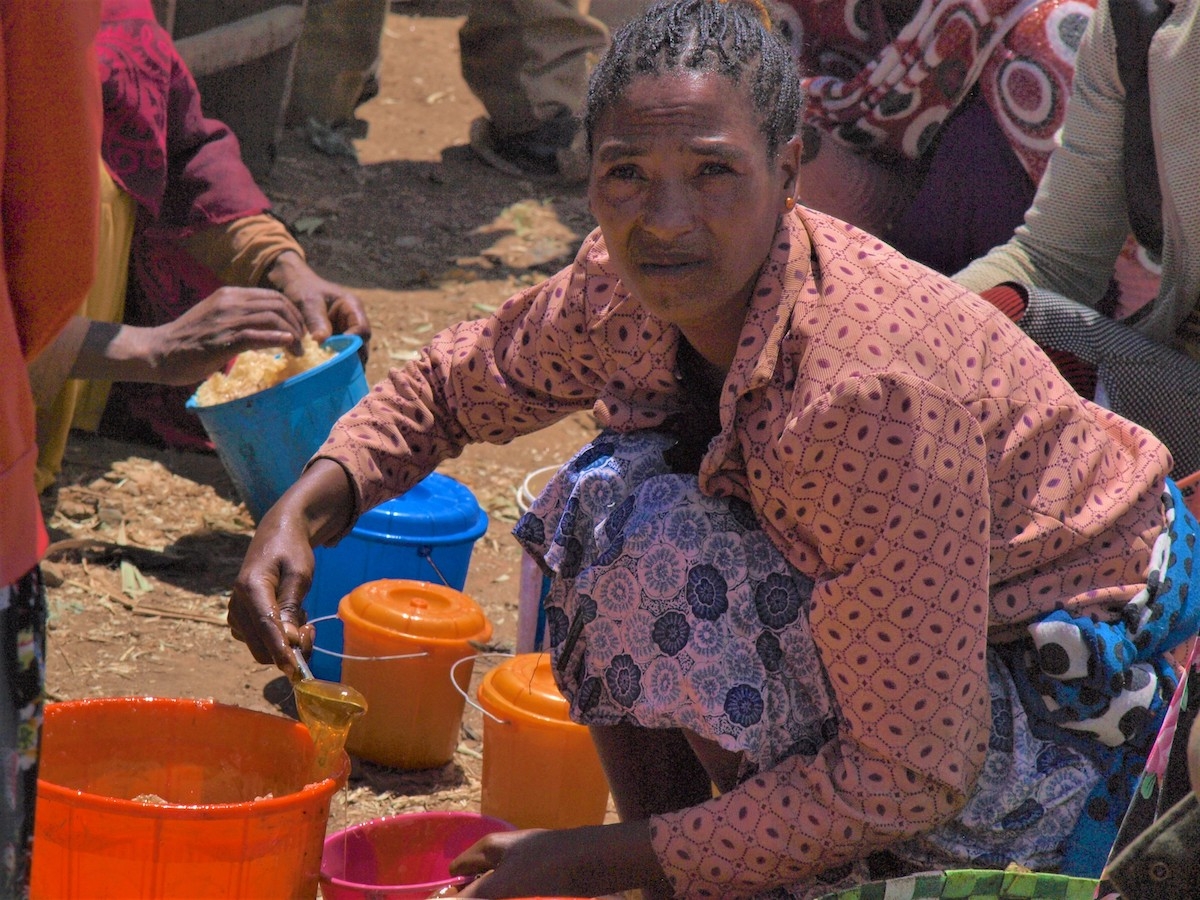The impacts of land degradation are already severe and far reaching. Degraded lands threaten soils, biodiversity, and the ability to grow food. Degradation makes it difficult for farmers to achieve the level of intensified agricultural production necessary to meet projected food demand. As with many developing countries across Africa and the world, this is Ethiopia's struggle.
Attempts to reverse land degradation are complicated by numerous institutional and socioeconomic challenges, such as the lack of short-term incentives to invest in environmental restoration; reluctance of communities and failure of public sector institutions to invest in natural resources management due to low, immediate financial and political rewards; and sectoral fragmentation. Households and communities are more likely to invest in activities that enable land restoration over a long period of time, if there are immediate economic incentives.
Restoring degraded ecosystems through the establishment of exclosures -- areas that are excluded from woodcutting, grazing and agricultural activities -- is an increasingly common practice in the Ethiopian Highlands, and regional states are also following this practice. The Government of Ethiopia, together with its development partners, has forged a restoration agenda that promotes the establishment of exclosures on degraded communal grazing lands.
But this strategy does not always take into consideration the impacts on livelihoods. Exclosures usually reduce the ability of households and communities to continue existing uses and reap the benefits generated from the land.
In poor communities, balancing the short-term economic returns and longer-term sustainability and environmental goals is critical to sustain the establishment of exclosures. Rural communities in Ethiopia often question the value of exclosures because of the lack of focus on their potential economic benefits. Without clear evidence of such benefits, local communities have no real incentive to support government efforts in establishing exclosures, putting their success at risk.
But exclosures can be turned into a win-win. Business models can provide an effective approach to bridging the gap between public interest in restoring landscapes/ecosystem services and perceived short-term economic losses at the local level.
A recent research report published by the International Water Management Institute (IWMI) and supported by CGIAR Research Program on Water, Land and Ecosystems (WLE) proposes the use of an adapted business model framework that outlines high potential economic opportunities that enhance the short-term benefits of exclosures. One potential business model highlights three revenue streams from activities that can be carried out within exclosures: beekeeping, harvesting fodder for livestock fattening and the cultivation of high-value plant species.
The adapted model provides a menu of needs for a successful implementation. These include integration of revenue streams within an exclosure (value proposition); access to key natural, human and financial resources; key activities in which the business entity has a competitive advantage; and stakeholders, partnerships and multi-stakeholder approaches to managing communal resources and facilitating financing. It also means running cost-benefit analyses of revenue options to ensure economic viability, and ensuring markets and channels are sufficient for products and services to be delivered.
The business model also includes a suitability mapping component. These maps identify potential areas where exclosures could be established. They also help guide distribution of these areas throughout the country, and identify the location of land degradation hot spots. The analysis also assesses whether existing biophysical conditions -- such as soil, biodiversity and climate -- favor other income-generating activities that could be integrated within exclosures.
According to the study, the three revenue streams considered -- beekeeping, harvesting fodder for livestock fattening, and cultivation of high-value plant species -- are feasible. These could turn into sustainable economic activities that allow for the restoration of ecosystem services over the long term.

Our cost-benefit analysis revealed that investment in beekeeping and honey production would be profitable, though only after seven years using the minimum number of hives, or as early as one year by increasing the number of beehives in an enterprise. Similarly, investment in livestock fattening is profitable, but only after a number of years with an optimal number of livestock. Investment in the cultivation of fruit trees would also be profitable given that sufficient time is taken into consideration to achieve production.
The study highlighted that the integration of income-generating activities (e.g., beekeeping, harvesting fodder for livestock fattening and the cultivation of high-value plant species) within exclosures is needed to compensate communities for the loss of communal space as well as to address the lack of short-term economic benefits and ensure the sustainability of exclosures.
The use of exclosures shows great promise in Ethiopia and elsewhere. But it needs the right support. Governments, communities and institutes need to mobilize financial resources, engage local communities, and provide training and continuous follow-up. And they will need to facilitate market opportunities in the value chain for local communities and enterprises. This may include, creating market linkages and establishing innovation platforms to engage with market actors.
With these kinds of efforts, Ethiopia could create sustainable revenue streams through exclosures. This would improve local livelihoods, but also help the country move forward on a vital land degradation solution.
Read the report:
Mekuria, W.; Gebregziabher, G.; Lefore, N. 2020. Exclosures for landscape restoration in Ethiopia: Business model scenarios and suitability. Colombo, Sri Lanka: International Water Management Institute (IWMI). 62p. (IWMI Research Report 175). https://doi.org/10.5337/2020.201.
---
Thrive blog is a space for independent thought and aims to stimulate discussion among sustainable agriculture researchers and the public. Blogs are facilitated by the CGIAR Research Program on Water, Land and Ecosystems (WLE) but reflect the opinions and information of the authors only and not necessarily those of WLE and its donors or partners.
WLE and partners are supported by CGIAR Trust Fund Contributors, including: ACIAR, DFID, DGIS, SDC, and others.










